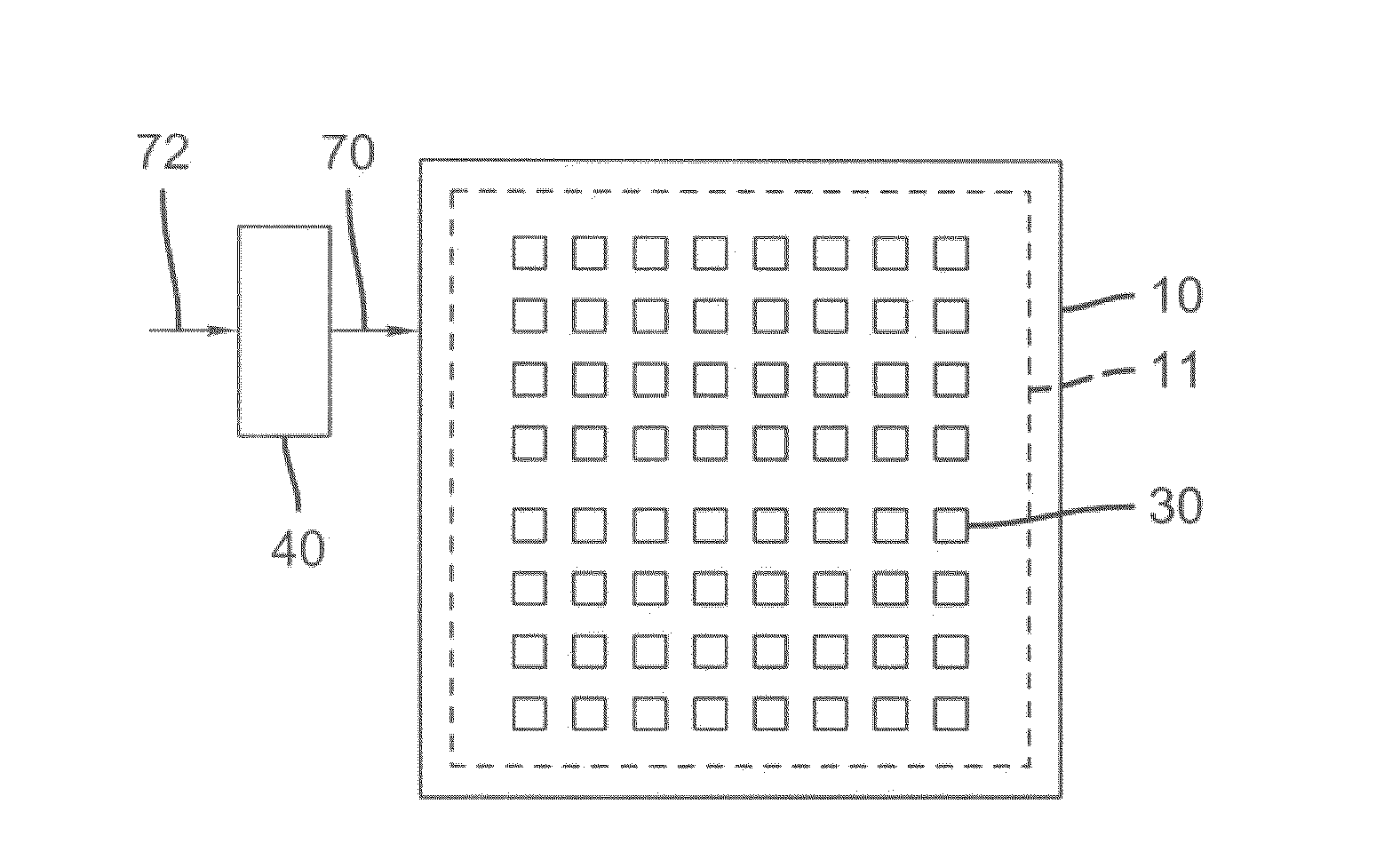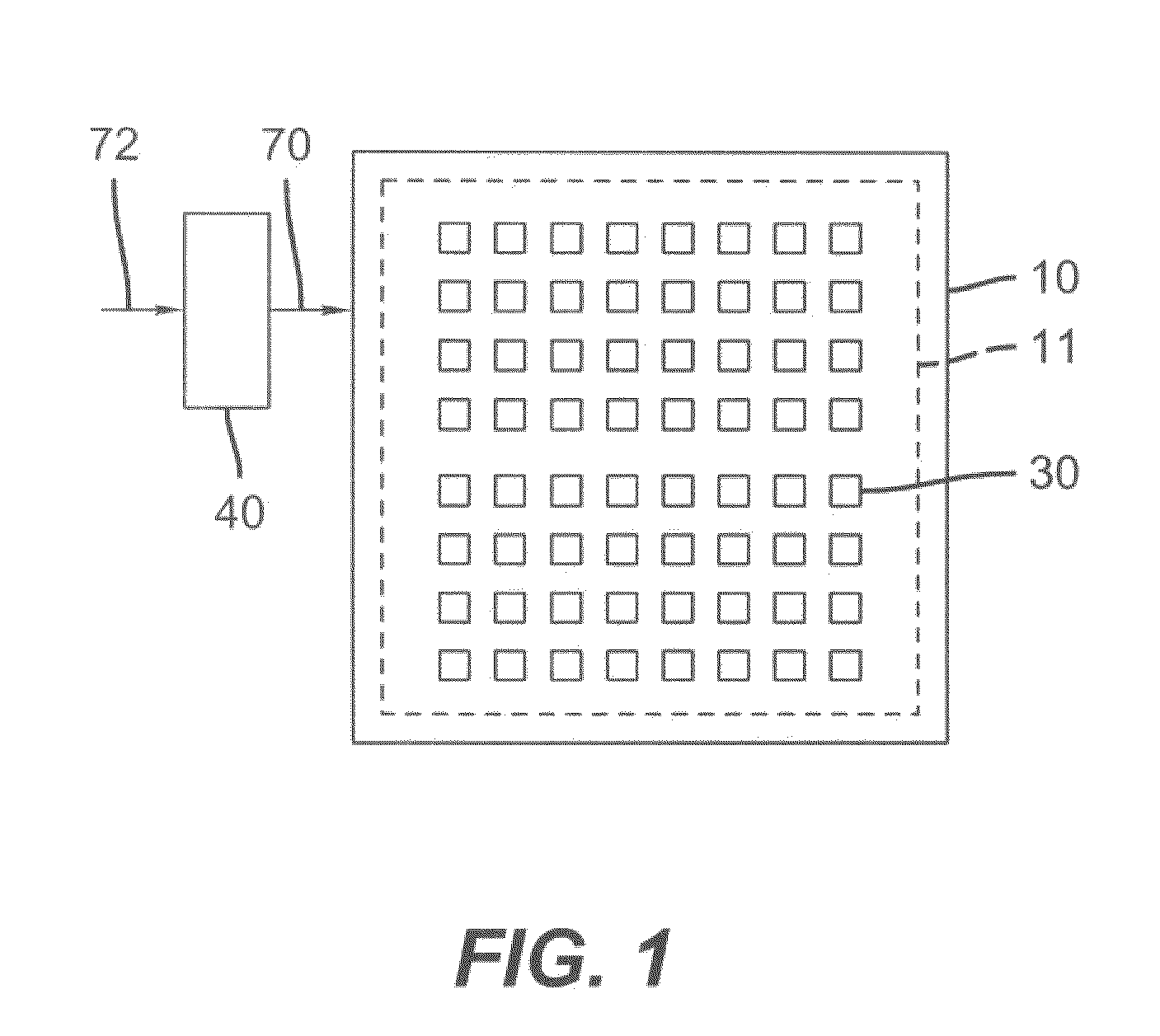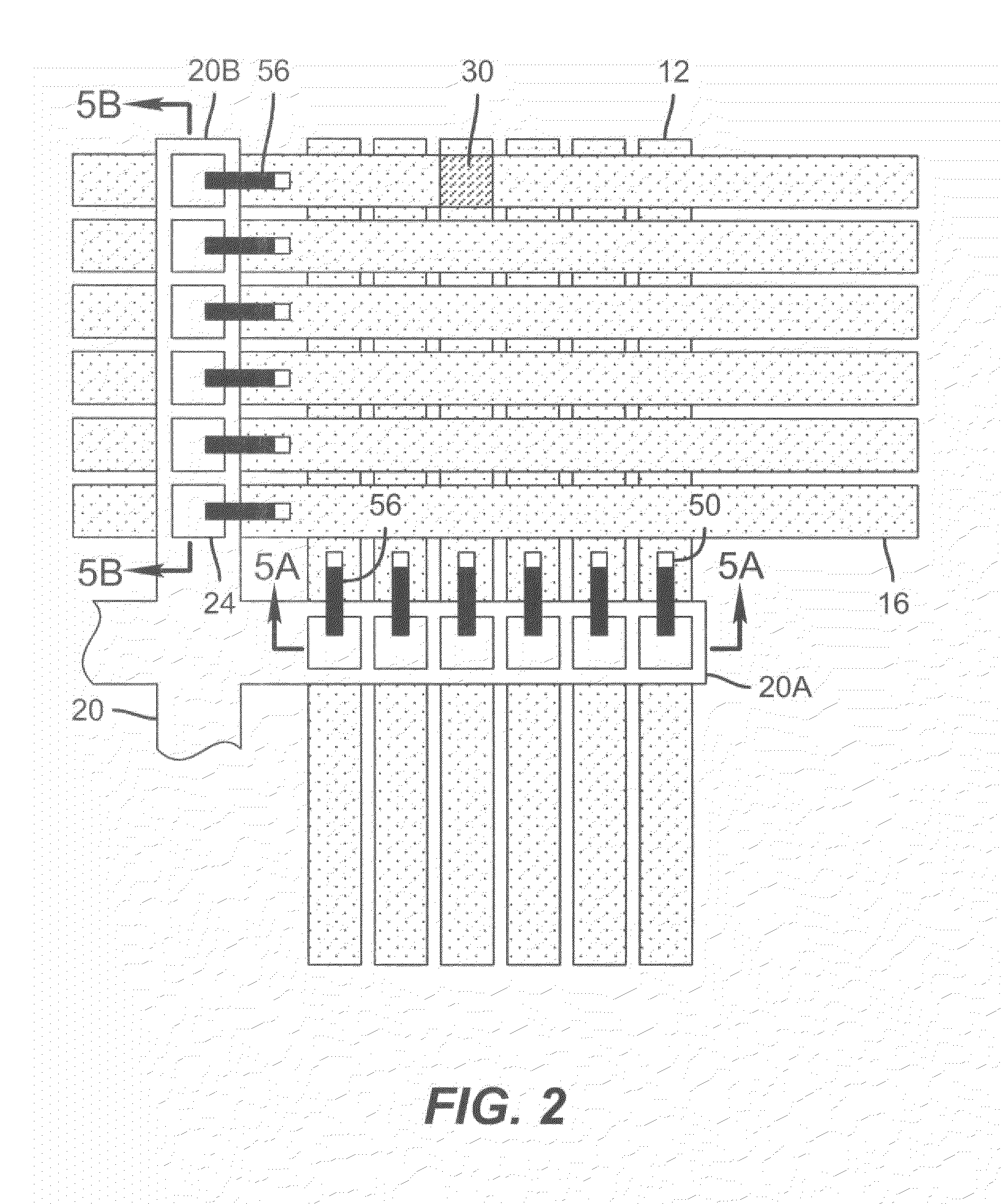Passive-matrix chiplet drivers for displays
a technology of matrix chiplet and display device, which is applied in the direction of semiconductor devices, instruments, electrical devices, etc., can solve the problems of affecting the inability the inability to accurately measure the current required to drive an entire row (or column) of the display, etc., to achieve the reduction of the size and number of chiplets, the effect of improving the uniformity and luminance of the display devi
- Summary
- Abstract
- Description
- Claims
- Application Information
AI Technical Summary
Benefits of technology
Problems solved by technology
Method used
Image
Examples
Embodiment Construction
[0031]Referring to FIG. 1, in one embodiment of a display device according to the present invention, a substrate 10 has a display area 11 including a two-dimensional array of pixels 30 located in the display area 11. A controller 40 is connected to and can control the display device through control signals 70 in response to image signals 72. As shown in FIGS. 2 and 3, a plurality of independent column electrodes 12 extend in a column direction in a first layer, a plurality of row electrodes 16 extends in a row direction different from the column direction in a second layer. A layer of light-emitting materials is located between the first and second layers; the pixels 30 in the two-dimensional array of pixels 30 are formed where the column electrodes 12 and row electrodes 16 overlap.
[0032]As used herein, a plurality of independent column electrodes 12 extending in a column direction means that the display device must have at least two electrically independent column electrodes 12 ext...
PUM
 Login to View More
Login to View More Abstract
Description
Claims
Application Information
 Login to View More
Login to View More - R&D
- Intellectual Property
- Life Sciences
- Materials
- Tech Scout
- Unparalleled Data Quality
- Higher Quality Content
- 60% Fewer Hallucinations
Browse by: Latest US Patents, China's latest patents, Technical Efficacy Thesaurus, Application Domain, Technology Topic, Popular Technical Reports.
© 2025 PatSnap. All rights reserved.Legal|Privacy policy|Modern Slavery Act Transparency Statement|Sitemap|About US| Contact US: help@patsnap.com



